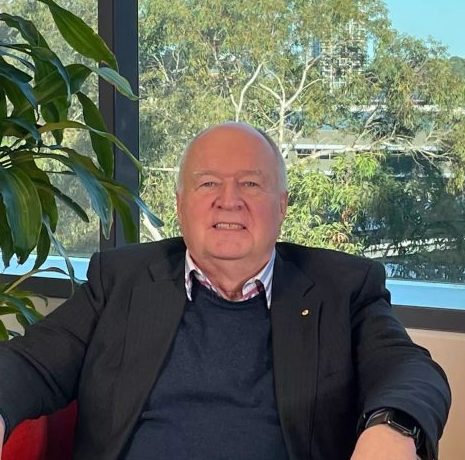With 64 million people[1] affected globally, heart failure is a rapidly escalating public health concern, especially critical among over-65s who face high mortality risks. In Asia, the situation is even more pressing, with patients developing heart failure up to a decade earlier[2] than in the West and often battling multiple comorbidities which exacerbate their prognosis. Efforts to improve acute heart failure outcomes are vital, particularly in regions grappling with a staggering 20% one-year mortality rate[3] post-discharge.
The STRONG-HF[4] and REPORT-HF[3] studies recently underscore the necessity of an intensive, evidence-based approach to managing acute heart failure (HF), aligning with the ESC 2023 guidelines.[5]
Turning the Tide in Heart Failure: Insights from Pivotal Trials
The STRONG-HF trial evidences the benefits of early, rigorous initiation and up-titration of heart failure (HF) therapies, monitored through NT-proBNP levels, significantly reducing HF readmissions and death within 180 days.
REPORT-HF[4] shows that patients from upper-middle-income countries had about a 22% higher risk of poor health outcomes after HF compared to patients from high-income countries, while those from lower-middle-income countries had almost 58% higher risk. Patients from Southeast Asia had more than double the risk of such outcomes, which indicates optimal guideline-directed medical therapy (GDMT) is crucial for survival, especially in these regions.
Together, these studies bolster the case for implementing the STRONG-HF protocol in Asia to improve patient outcomes in HF management. They pave the way for exploring how these insights can be effectively translated into practical strategies, especially in the diverse healthcare landscapes of Asia.
“There are just a lot of challenges and complexity to getting folks on guideline-directed medical therapies. It doesn’t mean that it gives us an excuse, but I do think that it’s a challenge that we need to rise to. And it requires not just us as individuals doing our jobs; it requires us working together with teams of folks that span transitions of care, from inpatient to outpatient settings within systems of healthcare that are supportive and with policy and payment that are supportive of high-value therapies,” says Dr Larry Allen.
This leads us to a discussion on the real-world application of the STRONG-HF protocol, examining its feasibility, challenges, and potential impact in everyday clinical settings.
Navigating Treatment Protocols in the STRONG-HF Study
The STRONG-HF [4] study employed a structured yet flexible approach in implementing its protocol.
a. Pre-discharge, within the controlled environment of the hospital, participants in the study were administered a complete dose of SGLT2 inhibitors and half doses of other key heart failure medications, including beta-blockers, ACE inhibitors/ARBs/ARNI, and MRA. This step was crucial for immediate monitoring in case of adverse reactions.
b. In the post-discharge phase, the protocol initially mandated weekly follow-up visits for the first three weeks, followed by a visit at six weeks, to closely monitor the recovery of patients. These visits focused on comprehensive clinical examinations and essential lab tests such as NT-proBNP, potassium, creatinine, and eGFR levels. The frequency of these visits was vital for adjusting treatments, especially when elevated NT-proBNP levels suggested a need for increased diuretics.
c. Heart failure patients were prioritised in outpatient centres, ensuring they received the necessary attention and care. This strategy aimed to streamline the process, making it more manageable even in large medical centres, where the additional patient load was minimal.
d. A key element of the STRONG-HF approach was utilising NT-proBNP levels as a measure of safety and efficacy to guide the titration of GDMT. Within the study context, this biomarker was crucial in ensuring patients received optimal care tailored to their specific health needs during the critical post-discharge period. The NT-proBNP trajectory was a primary driver for optimising GDMT.
e. Under ongoing review for its safety and efficacy, the protocol – which currently requires weekly follow-up visits for the first three weeks, then a visit at six weeks – may see future adjustments. Consideration is being given to extending these intervals, reflecting a potential increase in confidence in the treatment’s stability and the patient’s management outside the hospital. However, this modification is still under consideration.
It’s crucial to foster an understanding of rapidly up-titrating GDMT to enhance the adoption of evidence-based guidelines in treating heart failure. This approach, coupled with careful monitoring using NT-proBNP measurements, allows for timely adjustments based on immediate patient responses.
As Dr Mebazza says, “With STRONG-HF, the concept of administering the four pillars [of GDMT] should increasingly be considered in the early phase of the heart failure journey.”
Addressing common apprehensions through this methodical and patient-centric strategy can significantly improve treatment outcomes and adherence to recommended practices.
1. Levelling the Field: Addressing Gender Disparities
A critical focus lies on gender disparities, with regions in Asia showing notably poorer outcomes for heart failure patients, especially among younger patients and women.
Women, in particular, were about 1.5 times less likely than men to receive triple therapy. [6] This underlines the urgency for structural healthcare reforms, enhanced funding, and consistent patient follow-up. It also highlights the need to dispel gender-based misconceptions about the efficacy of heart failure therapies, advocating for equal treatment effectiveness across genders. This points towards the essential steps of challenging biases and historically lower treatment levels, particularly for women, to ensure fair and effective heart failure management.
2. Uniform Care Across Ethnicities
All patients in clinical trials, irrespective of ethnicity, are titrated to maximally tolerated guideline-directed doses. This highlights the need for a uniform approach to heart failure treatment across ethnicities, emphasising the effectiveness of standard, rigorous treatment protocols regardless of regional differences. Implementing such evidence-based strategies uniformly can lead to better outcomes in heart failure management across diverse populations.
3. Redefining Treatment: Beyond Traditional Heart Approaches
Changing heart failure treatment in the region requires shifting from traditional, minimal dosing to evidence-based methods. Encouraging self-assessment and improvement in treatment approaches and having dedicated advocates in hospitals to drive the adoption of modern protocols like STRONG-HF are key steps towards this change.
4. Innovating Access: New Frontiers in Heart Failure Care
Maintaining adherence to heart failure treatments can be particularly challenging in areas with limited access to hospital facilities. Innovative approaches are being adopted, such as telemonitoring, leveraging mobile care systems, and introducing home visits from skilled nurses instead of clinicians. Adapting and evolving healthcare delivery is crucial for improving treatment compliance and heart failure management in areas with limited access to conventional care facilities.
5. Balancing Safety and Efficacy: Addressing Hypotension in HF Therapy
The reluctance to adopt aggressive heart failure treatments due to fears of hypotension, particularly with medications like ARNIs, can lead to premature labelling of patients as intolerant, potentially depriving them of the benefits of higher doses.
While it’s true that there is a slight rise in the risk of low blood pressure, it’s crucial to approach medication dosages carefully. Instead of immediately opting for the highest doses or being too apprehensive to try them, beginning treatment with lower doses is often effective. Many patients respond favourably to this approach and can handle increased dosages over time as their condition improves.
“Many a time our patients actually surprise us. We start with the half dose, and interestingly, as they improve, they actually tolerate higher doses,” says Dr Carolyn Lam
The key is to be cautious, especially with patients who are dehydrated or already have symptomatic hypotension. Careful monitoring and gradual dose adjustments using key indicators like NT-ProBNP and potassium, creatinine, and eGFR levels can balance effective treatment with patient safety.
Advancing Heart Failure Treatment in Asia: The Road Ahead
The path forward for heart failure management in Asia involves several key steps:
a. Dissemination and Implementation of STRONG-HF:
The STRONG-HF trial not only demonstrates the effectiveness of its protocol but also offers a practical model for alignment across healthcare systems. It underscores the need for collaboration across various care transitions and supports the implementation of high-value therapies within supportive healthcare policies.
b. Creating Awareness and Finding Champions:
“The answer lies in creating more awareness and finding a champion within your local hospital willing to develop that awareness and implement STRONG-HF or an equivalent approach – that could work,” says Dr Jasper Tromp. These champions play a vital role in fostering acceptance and adherence to the protocol within their institutions.
c. Emphasising Evidence-Based Practice:
Clinicians in the Asia-Pacific region, known for their cautious approach, should focus on evidence-based science to guide their treatment strategies. This involves moving beyond traditional practices and adopting protocols that have proven effective through rigorous trials.
Conclusion
Adopting STRONG-HF’s approach and NT-proBNP monitoring in Asia paves the way for a transformative leap in heart failure care. It’s a clear call to action for healthcare professionals: adopt evidence-based methods for a measurable impact on patient health in the region.
For more information, watch the recent webinar from the American Heart Association.

















